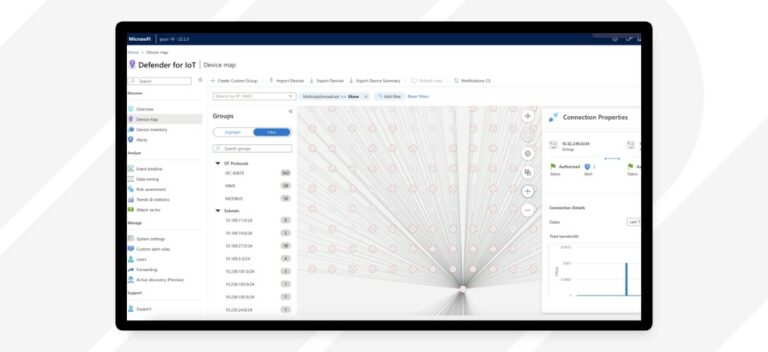Microsoft launches the first public release of Defender for IoT. The software secures IoT and OT devices like smart cameras and sensors.
The solution is agentless. Protection starts with an overview of all IoT and OT devices in an environment. Next, the solution points out misconfigurations and outdated software versions. Finally, the software recognizes suspicious traffic with machine learning.
Microsoft Defender for IoT
Every step is valuable. Invisible devices are unsafe, but manually keeping inventory takes time. Defender for IoT automates the process.
An overview isn’t worth much by itself. You need to understand the data to recognize misconfigurations and outdated software versions. That’s difficult without training. Defender for IoT near-instantly provides an overview of risks.
Finally, Defender for IoT differentiates between suspicious network traffic and normal network traffic. The solution runs on machine learning, fed by the daily data of Microsoft customers worldwide. Users receive alerts about the threats that matter — nothing more, nothing less.
How?
The solution is available standalone. You pay a fixed monthly fee for every 100 secured devices.
Configuring Defender for IoT takes less time for organizations already working with Defender for Endpoint. Defender for Endpoint recognizes endpoints through clients spread across central network locations. Defender for IoT is able to use the same clients to recognize IoT and OT devices. Existing users don’t have to redeploy a thing.
In addition, Microsoft maintains an official integration of Defender for Endpoint and Defender for IoT. Users of both solutions can manage IoT and OT devices from Defender for Endpoint. The solution also integrates with Sentinel, Microsoft’s SIEM offering.
